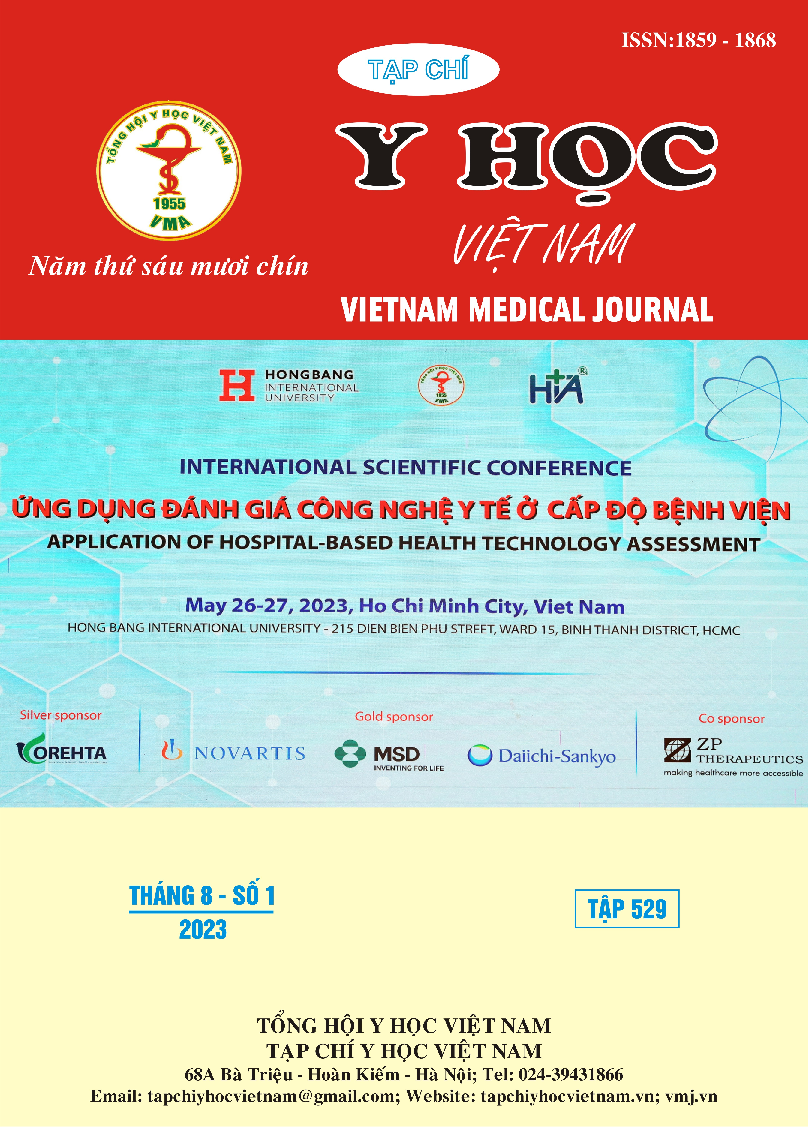ĐÁNH GIÁ MỨC ĐỘ ỔN ĐỊNH CỦA IMPLANT SAU CẤY GHÉP BẰNG PHƯƠNG PHÁP ĐO LỰC PHẢN HỒI (IST) TRÊN THIẾT BỊ ANYCHECK
Nội dung chính của bài viết
Tóm tắt
Mục tiêu: đánh giá phương pháp đo lực phản hồi để xác định mức độ vững ổn trực tiếp trên trụ lành thương sau cấy ghép implant thông qua chỉ số IST trên thiết bị Anycheck. Đối tượng và phương pháp nghiên cứu: mô tả tiến cứu trên 36 bệnh nhân được cấy ghép Implant vùng răng số 6,7 hàm dưới với loại xương D3 tại Bệnh viện quốc tế Becamex từ 06/2022 đến 02/2023. Kết quả: sau phẫu thuật: chỉ số IST 77,3 ± 2,71; sau 1 tuần 74,5 ± 2,78; sau 2 tuần 75,8 ± 2,73; sau 3 tuần 76,2 ± 2,76; sau 04 tuần 76,8 ± 3,1; sau 06 tuần 77,8 ± 2,83. Khả năng đánh giá độ ổn định của implant bằng thiết bị phản hồi lực Anycheck được đánh giá bước đầu là khá an toàn và tiện lợi do có thể đo trong 3 giây/1 implant mà không cần tháo trụ lành thương, nên rất thuận tiện khi cần đo nhiều implant trên một bệnh nhân. Thiết bị được thiết kế rất an toàn với mỗi lần đo với lực gõ dưới 1.0Ncm nên sẽ không ảnh hưởng đến cấu trúc xung quanh implant. Thiết bị sẽ chỉ gõ một lực rất nhẹ 6 lần/1 lần đo trên implant được tích xương tốt, tuy nhiên, chỉ gõ 2 lần trên các implant có sự tích hợp xương kém để tránh sang chấn.
Chi tiết bài viết
Từ khóa
: phản hồi lực, chỉ số IST, Anycheck, vững ổn ban đầu, implant nha khoa.
Tài liệu tham khảo
2. Degidi M, Nardi D, Piattelli A, (2011), "One abutment at one time: non-removal of an immediate abutment and its effect on bone healing around subcrestal tapered implants", Clin Oral Implants Res, 22 (11), pp. 1303-1307.
3. H H, G W, E H, (2020), "The clinical significance of implant stability quotient (ISQ) measurements: A literature review", J Oral Biol Craniofac Res, 10 (4), pp. 629-638.
4. Lages F S, Douglas-de Oliveira D W, Costa F O, (2018), "Relationship between implant stability measurements obtained by insertion torque and resonance frequency analysis: A systematic review", Clin Implant Dent Relat Res, 20 (1), pp. 26-33.
5. Lee D H, Shin Y H, Park J H, Shim J S, et al, (2020), "The reliability of Anycheck device related to healing abutment diameter", J Adv Prosthodont, 12 (2), pp. 83-88.
6. Molina A, Sanz-Sánchez I, Martín C, Blanco J, et al, (2017), "The effect of one-time abutment placement on interproximal bone levels and peri-implant soft tissues: a prospective randomized clinical trial", Clin Oral Implants Res, 28 (4), pp. 443-452.
7. Olivé J, Aparicio C, (1990), "Periotest method as a measure of osseointegrated oral implant stability", Int J Oral Maxillofac Implants, 5 (4), pp. 390-400.
8. Staedt H, Kämmerer P W, Goetze E, Thiem D G E, et al, (2020), "Implant primary stability depending on protocol and insertion mode - an ex vivo study", Int J Implant Dent, 6 (1), pp. 49.
9. Troiano G, Lo Russo L, Canullo L, Ciavarella D, et al, (2018), "Early and late implant failure of submerged versus non-submerged implant healing: A systematic review, meta-analysis and trial sequential analysis", J Clin Periodontol, 45 (5), pp. 613-623.
10. van Eekeren P, Said C, Tahmaseb A, Wismeijer D, (2015), "Resonance Frequency Analysis of Thermal Acid-Etched, Hydrophilic Implants During First 3 Months of Healing and Osseointegration in an Early-Loading Protocol", Int J Oral Maxillofac Implants, 30 (4), pp. 843-850


